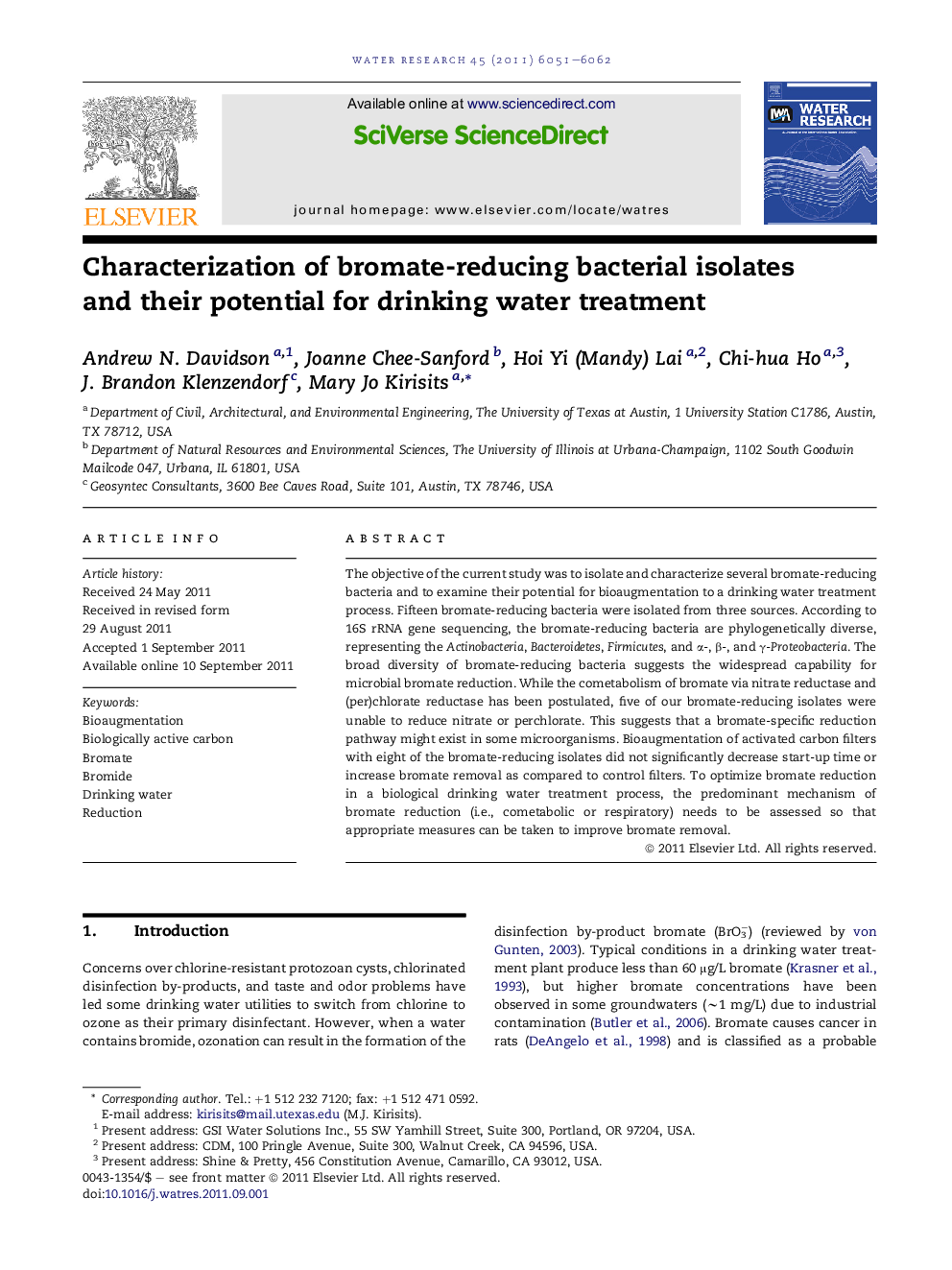| Article ID | Journal | Published Year | Pages | File Type |
|---|---|---|---|---|
| 4482689 | Water Research | 2011 | 12 Pages |
The objective of the current study was to isolate and characterize several bromate-reducing bacteria and to examine their potential for bioaugmentation to a drinking water treatment process. Fifteen bromate-reducing bacteria were isolated from three sources. According to 16S rRNA gene sequencing, the bromate-reducing bacteria are phylogenetically diverse, representing the Actinobacteria, Bacteroidetes, Firmicutes, and α-, β-, and γ-Proteobacteria. The broad diversity of bromate-reducing bacteria suggests the widespread capability for microbial bromate reduction. While the cometabolism of bromate via nitrate reductase and (per)chlorate reductase has been postulated, five of our bromate-reducing isolates were unable to reduce nitrate or perchlorate. This suggests that a bromate-specific reduction pathway might exist in some microorganisms. Bioaugmentation of activated carbon filters with eight of the bromate-reducing isolates did not significantly decrease start-up time or increase bromate removal as compared to control filters. To optimize bromate reduction in a biological drinking water treatment process, the predominant mechanism of bromate reduction (i.e., cometabolic or respiratory) needs to be assessed so that appropriate measures can be taken to improve bromate removal.
► Bromate-reducing bacteria are phylogenetically diverse. ► Not all bromate-reducing isolates have the ability to reduce nitrate. ► Biologically active carbon filtration provides sustainable bromate reduction. ► Bioaugmentation did not improve bromate removal in a filter.
